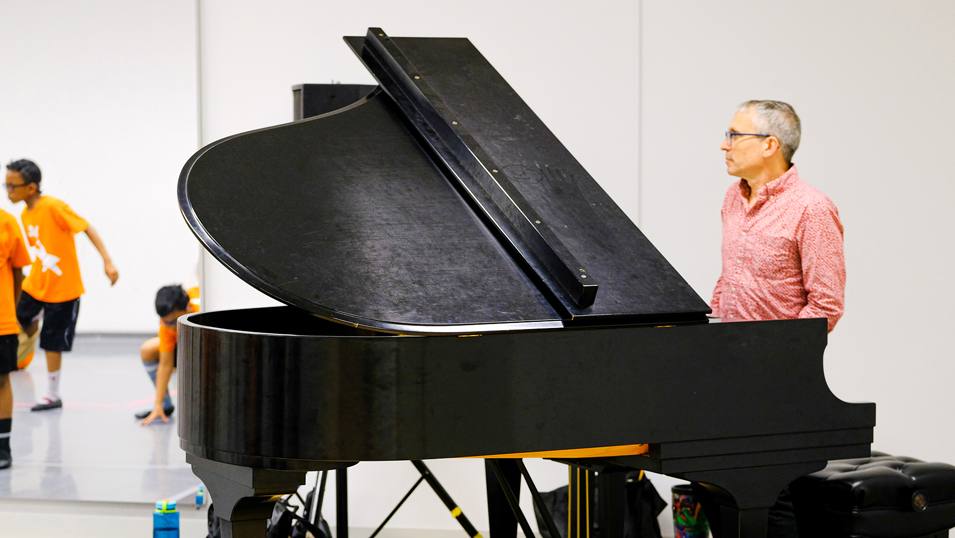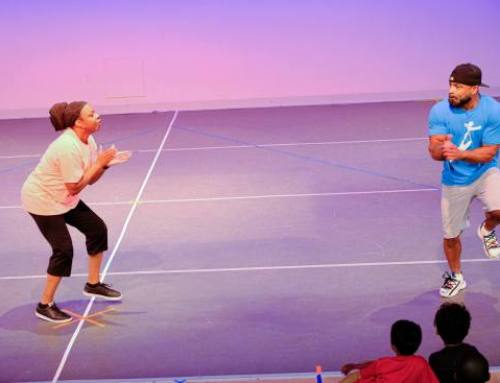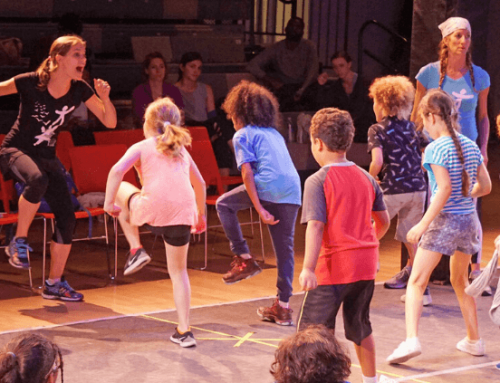By Jerome Korman, NDI Music Director
A few weeks ago, which feels like an eternity, I was scheduled to post this blog post about the musical life playing for dance has gifted me. When my colleagues at National Dance Institute (NDI) asked me to finish the post, my first thought was that it seemed frivolous and perhaps not pertinent to the situation the world finds itself in. But it has become clear through all the social media postings that people need to connect and artists need to create. Now is a good time to learn new things, but it is also time to reflect on past challenges and give thanks for all that we have. In that spirit, I give you this post that articulates some of the important ways playing and writing music for dance has shaped my musical journey…in a good way.
To a musician who accompanies dance class, 5678 means … play something! At NDI—where most classes are held during the school day for public school students—5678 often means, play something up tempo with a strong beat. Aside from that, the style and inventiveness of the music is up to the musician. Lately, I’ve been wondering how this journey with dance and theater has affected my musicianship in general.
Musical Styles
To meet the challenge posed by the many 5678s in any particular class or rehearsal, a successful music teaching artist at NDI will pay close attention to the dance teacher and be well-versed in a myriad of musical styles. When I change styles in a dance class, I can see the dynamics in the bodies change. Dancers move differently to Rock or Disco, Salsa or Jazz. It’s visceral, immediate, electric, and fun! In addition, it is so important that young people hear a variety of music played live and in-person. Outside of the dance world, being able to play many styles has afforded me the opportunity to collaborate with a variety of great musicians and interface with many cultures.
Creation and Collaboration
In dance classes and rehearsals, pianists: create in the moment, observe, react to physical cues, rhythmic accents & verbal cues, and invent a sonic environment that includes songs, improvisations & sound effects. The studio itself is a creative living organism that leaves a lasting impression. To support this creative spirit, my arrangements and compositions aim to ensure there are musical and theatrical arcs informed by the movement. Sometimes it works just the opposite and my compositions are written imagining the un-created choreography. Clearly, this part of my professional life has been about creating music in service to and in collaboration with another art form.
Improvisation
I know one thing for sure—every time I play for a dance class that includes musical improvisation, I play something that I never would have played if I were not looking at dancers. The rhythm of the steps, the flow of the upper body, physical accents, stretching, stretching further…all of these things (and more of course) inspire the music that comes out. It’s unique to the moment, to the feeling in the room—it’s a short story and then it’s gone.
Storytelling
Or not…as I’ve reflected how I’ve internalized the dance environment, my solo-jazz piano playing and my playing as a sideman in musical ensembles has changed. I am thinking more about storytelling. When I take a solo, sometimes I try to imagine how a dancer might be moving and it forces me to make accent choices that are new and different. I am paying attention to the other players a little more, just as I have to focus intently on a dance teacher while a class is progressing, or a choreographer as they are creating. I am embracing the skills I’ve learned by being immersed in the dance world and am allowing those skills to inform my musical world—the musical stories I try to tell.
In Katherine Teck’s book Music for the Dance: Reflections on a Collaborative Art, there is a story Agnes De Mille tells about Trude Rittman, one of her favorite dance arrangers. Teck writes, “She was the only one who worked into the fiber of the tune, and played around with the rhythms of the tune-inverting, changing accents, changing patterns.” The musical journey required to get into the fiber of a tune and create an arrangement that moves dancers and is successful both musically and theatrically. The journey changes you..in a good way!
About Jerome Korman
For more than twenty-five years Jerome Korman has had the opportunity to accompany dance classes, make dance arrangements of existing songs, and compose original material. Many of these years have been spent as the Music Director of NDI, where he has been fortunate to work with Jacques d’Amboise, the founder of NDI, Ellen Weinstein, the artistic director of NDI, and many more of the wildly talented teaching artists at NDI. It’s been a beautiful journey.
See Jerry’s music in action during his ndiLIVE! Jam Session here:



